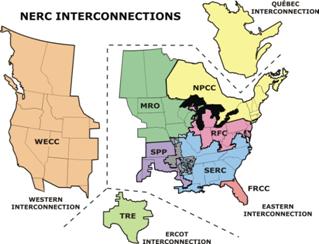
The Climate & Energy Policy Lab has been collaborating with Oak Ridge National Lab (ORNL) to explore the demand-side resources for electricity planning in the Eastern Interconnection region (see the map to the right). As a part of the Eastern Interconnection Planning Collaborative (EIPC) project, CEPL has completed the investigation of a broad range of electricity planning futures in terms of the demand reduction potential for efficiency improvements in several policy scenarios.
Three levels of potential for energy efficiency are discussed (technical, economic and achievable), but the study emphasizes the achievable potential for end-use efficiency improvements, prompted by policy implementation.
The project identifies a series of policies and examines their impacts on future electricity consumptions by modeling them with the National Energy Modeling System (NEMS). The project emphasizes the direct impacts on end-use demand, the cost-effectiveness of these policies, as well as the distributive effects at the state level. Thirty-six states and D.C. are covered by the study with projected electricity demand over the following 25 years in the residential, commercial and industrial sectors.
A suite of eleven policies was modeled in NEMS: four regulatory policies, four financial policies, and three information policies. Together in an Integrated Policy case, these policies demonstrate significant achievable potential: 457 TWh (10.2%) of electricity savings in 2035. All eleven policies examined were estimated to have lower levelized costs than average electricity retail prices. Levelized costs range from 0.5 – 8.0 cents/kWh, and the regulatory and information policies tend to be most cost-effective.
Resources:
- The Eastern Interconnection: Exploring its Efficiency Potential — Presentation at a Meeting of the Eastern Interconnection States Planning Council, New Orleans – January 18, 2013
- Full Eastern Interconnection Planning Collaborative Paper
Sponsors: ORNL and DOE’s Office of Electricity
Researchers:
- Dr. Marilyn A. Brown: marilyn.brown@pubpolicy.gatech.edu
- Yu Wang: yu.wang@gatech.edu
- Youngsun Baek: baeky@ornl.gov
- Stan Hadley: hadleysw@ornl.gov
